Review: 2020 Nukeproof Reactor 290c RS
Nukeproof dug into the archives when it came time to name their latest aggressive trail bike. The Reactor used to be an aluminum, linkage-fork-equipped hardtail back in 1996, but the new version bears little in common with that piece of mountain bike history.
The 2020 Reactor is available with either 29” or 27.5” wheels, with 130 or 140 mm of rear travel respectively. There are carbon and aluminum frame options, and there's an RS version for each wheel size, which Nukeproof says is the “hooligan spec option in the range, with a host of upgrades to make it burlier than the rest.”
The 2020 Reactor is available with either 29” or 27.5” wheels, with 130 or 140 mm of rear travel respectively. There are carbon and aluminum frame options, and there's an RS version for each wheel size, which Nukeproof says is the “hooligan spec option in the range, with a host of upgrades to make it burlier than the rest.”
Reactor 290c RS Details
• Wheel size: 29" (27.5" options available)
• Travel: 130mm rear / 150mm front
• 65- or 65.5 degree head angle
• 440mm chainstays
• 12 x 148mm rear axle spacing
• Price as shown: $5,399 USD
• Weight: 31.1 lb (size large, as shown)
• www.nukeproof.com
• Wheel size: 29" (27.5" options available)
• Travel: 130mm rear / 150mm front
• 65- or 65.5 degree head angle
• 440mm chainstays
• 12 x 148mm rear axle spacing
• Price as shown: $5,399 USD
• Weight: 31.1 lb (size large, as shown)
• www.nukeproof.com
Highlights of the 290c RS reviewed here include a 150mm RockShox Lyrik Ultimate RCT3 fork, a Super Deluxe Ultimate RCT shock, SRAM X01 12-speed drivetrain, Code brakes, and Mavic Deemax DH wheels with Maxxis Assegai and DHR II EXO+ tires. Yes, the test bike pictured has different wheels and tires – that topic's covered in the Setup section.
Construction and Features
This is Nukeproof's first full carbon frame – previous models used an alloy swingarm – but I'd say that they did a good job giving it a clean, modern look, with tube shapes that help it stand out from other bikes that use a similar design. The top tube is wide but relatively flat, with a ridge on each side that leads the viewer's eyes toward the swingarm.
Most of the little details are in order – there's room for a water bottle inside the front triangle, a threaded bottom bracket, chainslap and downtube protection, and ISCG 05 tabs for riders that want to run a chainguide or bashguard. The Reactor will fit up to a 2.6” rear tire, or you can run something smaller and benefit from even more mud clearance.
There's internal routing through the downtube, but the derailleur and brake line emerge and are then routed underneath the bottom bracket shell, which can be a polarizing design choice. It's quite rare, but that positioning does allow for the possibility of pinching the housing against a rock or root.
This is Nukeproof's first full carbon frame – previous models used an alloy swingarm – but I'd say that they did a good job giving it a clean, modern look, with tube shapes that help it stand out from other bikes that use a similar design. The top tube is wide but relatively flat, with a ridge on each side that leads the viewer's eyes toward the swingarm.
Most of the little details are in order – there's room for a water bottle inside the front triangle, a threaded bottom bracket, chainslap and downtube protection, and ISCG 05 tabs for riders that want to run a chainguide or bashguard. The Reactor will fit up to a 2.6” rear tire, or you can run something smaller and benefit from even more mud clearance.
There's internal routing through the downtube, but the derailleur and brake line emerge and are then routed underneath the bottom bracket shell, which can be a polarizing design choice. It's quite rare, but that positioning does allow for the possibility of pinching the housing against a rock or root.
Geometry & Sizing
The RS model of the Reactor gets a 150mm fork, which changes the geometry slightly compared to the non-RS version and its 140mm fork. The headtube angle sits at either 65.5 or 65-degrees, and the seat angle is either 75.1 or 74.6-degrees depending on the position of the seatstay flip chip. 'Rail' is the slacker setting, and 'Trail' is the steeper option.
Reach numbers range from 446mm to 509mm for the 29” model, which is available in only three sizes – M, L, XL, but there is a size small version available in the 27.5” version.
The RS model of the Reactor gets a 150mm fork, which changes the geometry slightly compared to the non-RS version and its 140mm fork. The headtube angle sits at either 65.5 or 65-degrees, and the seat angle is either 75.1 or 74.6-degrees depending on the position of the seatstay flip chip. 'Rail' is the slacker setting, and 'Trail' is the steeper option.
Reach numbers range from 446mm to 509mm for the 29” model, which is available in only three sizes – M, L, XL, but there is a size small version available in the 27.5” version.
Suspension Design
The Reactor's Horst Link suspension layout is similar to what's found on the Nukeproof Mega, but the kinematics have been altered to suit the Reactor's slightly more pedaling-oriented focus. Anti-squat sits at 92% in the 32/50 gear ratio, but it falls off fairly quickly as the bike goes through its travel in order to allow the suspension to work unimpeded in rougher terrain.
The Reactor has 89% anti-rise at sag, which drops to 32% at full bottom-out. According to Nukeproof, the goal was to allow for some squat while braking hard into a corner, while still offering pressure through the tire to maintain traction.
The Reactor has a 21% leverage ratio change, which is also a bit higher than the Mega. That was done in order to increase the amount of mid-stroke support and end-stroke ramp up – Nukeproof expect this bike to be ridden hard, and wanted to ensure it didn't blow through the moderate amount of travel too quickly.
| Specifications | ||
| Price | $5399 | |
| Travel | 130mm | |
| Rear Shock | RockShox Super Deluxe Ultimate RCT, 210 x 50mm | |
| Fork | RockShox Lyrik Ultimate Charger 2 RCT3 150mm / 51mm offset | |
| Headset | Nukeproof, 44-56 IITS | |
| Cassette | SRAM XO1 Eagle 12-Speed | |
| Crankarms | SRAM X1 Carbon Eagle 12-Speed, 170mm, 30t | |
| Rear Derailleur | SRAM XO1 Eagle 12-Speed | |
| Shifter Pods | SRAM XO1 Eagle 12-Speed | |
| Handlebar | Nukeproof Horizon Carbon 25mm Rise, 31.8mm diameter | |
| Stem | Nukeproof Horizon, 50mm, Black | |
| Grips | Nukeproof Sam Hill Signature | |
| Brakes | SRAM Code RSC | |
| Wheelset | Mavic Deemax DH, 29" | |
| Tires | Maxxis Assegai 29”x2.5 WT 3C MaxxTerra/EXO+ / Rear: Maxxis Minion DHR II 29 x 2.4" MaxxTerraEXO+ | |
| Seat | Nukeproof Horizon SL | |
| Seatpost | RockShox Reverb Stealth with 1x Remote, 31.6mm | |
Test Bike Setup
Like I mentioned earlier, my test bike showed up with a different wheelset and tires than what's listed on the spec sheet due to a lacing issue with an early batch of the Mavic Deemax wheels the bike is supposed to come with. I've spend a fair bit of time on the Michelin Wild Enduro tires, but for most of the test period I ran a 2.5” EXO+ Maxxis Assegai up front and a 2.4” EXO+ DHR II in the rear, which is the stock spec. The DT Swiss wheelset is a little lighter than the Mavic one, but not enough to have enough of an impact to alter my ride impressions.
I ran 82 psi in the 150mm Lyrik, with two tokens installed. The SuperDeluxe shock was set up with 30% sag, one volume spacer, and the low speed compression all the way open.
Testing took place around Bellingham, Washington, on a wide range of terrain, including slower speed, root-filled technical puzzles, smoother, jump and berm filled trails, along with steeper and rockier options that are a good place to find the limits of a bike like the Reactor.
Like I mentioned earlier, my test bike showed up with a different wheelset and tires than what's listed on the spec sheet due to a lacing issue with an early batch of the Mavic Deemax wheels the bike is supposed to come with. I've spend a fair bit of time on the Michelin Wild Enduro tires, but for most of the test period I ran a 2.5” EXO+ Maxxis Assegai up front and a 2.4” EXO+ DHR II in the rear, which is the stock spec. The DT Swiss wheelset is a little lighter than the Mavic one, but not enough to have enough of an impact to alter my ride impressions.
I ran 82 psi in the 150mm Lyrik, with two tokens installed. The SuperDeluxe shock was set up with 30% sag, one volume spacer, and the low speed compression all the way open.
Testing took place around Bellingham, Washington, on a wide range of terrain, including slower speed, root-filled technical puzzles, smoother, jump and berm filled trails, along with steeper and rockier options that are a good place to find the limits of a bike like the Reactor.
Mike Kazimer
Location: Bellingham, WA, USA
Age: 37
Height: 5'11" / 180cm
Inseam: 33" / 84cm
Weight: 160 lbs / 72.6 kg
Industry affiliations / sponsors: None
Instagram: @mikekazimer
Location: Bellingham, WA, USA
Age: 37
Height: 5'11" / 180cm
Inseam: 33" / 84cm
Weight: 160 lbs / 72.6 kg
Industry affiliations / sponsors: None
Instagram: @mikekazimer
Climbing
The Reactor gets docked a couple of points for not having a steep enough seat angle, a fact that's exacerbated slightly by the 150mm fork on the RS version. 74.6-degrees used to be fairly typical, but it's almost 2020, and we're seeing more and more bikes released with seat tube angles in the 77-degree range. I know it doesn't seem like much, but 2.4-degrees does make a significant difference in how stretched out a bike's seated pedaling position will feel due to the change in the top tube length. For comparison, the Yeti SB130's top tube length is 16mm shorter than the Reactor, even with a 480mm reach vs. the Reactor's 475.
What do all those numbers mean out on the trail? Well, in this case it meant that I ended up slamming the Reactor's seat all the way forward and switching to a 40mm stem in order to get the bike to feel the way I wanted. That's not the end of the world, but it's something to keep in mind, especially for riders who may be between sizes.
Fit-related details aside, the Reactor is what I'd call a 'reliable' climber. It's not a ultralight sprinter, and it's handling is more relaxed than rabid, but it's not easily stymied, no matter what I put in its way. There's minimal unwanted suspension movement during seated climbing, and even when standing I never felt like I needed to reach for that lockout lever. It's there if you need it, but I was perfectly comfortable leaving it alone at all times.
One of my favorite local loops includes a neglected stretch of singletrack that's chock full of technical climbs, many of them featuring off-camber roots, with a decent amount of exposure that makes tipping over something to avoid at any cost. The Reactor ate it all up, and despite the fact that it was dark, gloomy, and pissing rain, I found myself laughing out loud after making it though a few extra-challenging sections without dabbing. The bike possesses a good mix of support and geometry that makes it easy to keep trucking right along even when the chances of cleaning a section seem slim.
The Reactor gets docked a couple of points for not having a steep enough seat angle, a fact that's exacerbated slightly by the 150mm fork on the RS version. 74.6-degrees used to be fairly typical, but it's almost 2020, and we're seeing more and more bikes released with seat tube angles in the 77-degree range. I know it doesn't seem like much, but 2.4-degrees does make a significant difference in how stretched out a bike's seated pedaling position will feel due to the change in the top tube length. For comparison, the Yeti SB130's top tube length is 16mm shorter than the Reactor, even with a 480mm reach vs. the Reactor's 475.
What do all those numbers mean out on the trail? Well, in this case it meant that I ended up slamming the Reactor's seat all the way forward and switching to a 40mm stem in order to get the bike to feel the way I wanted. That's not the end of the world, but it's something to keep in mind, especially for riders who may be between sizes.
Fit-related details aside, the Reactor is what I'd call a 'reliable' climber. It's not a ultralight sprinter, and it's handling is more relaxed than rabid, but it's not easily stymied, no matter what I put in its way. There's minimal unwanted suspension movement during seated climbing, and even when standing I never felt like I needed to reach for that lockout lever. It's there if you need it, but I was perfectly comfortable leaving it alone at all times.
One of my favorite local loops includes a neglected stretch of singletrack that's chock full of technical climbs, many of them featuring off-camber roots, with a decent amount of exposure that makes tipping over something to avoid at any cost. The Reactor ate it all up, and despite the fact that it was dark, gloomy, and pissing rain, I found myself laughing out loud after making it though a few extra-challenging sections without dabbing. The bike possesses a good mix of support and geometry that makes it easy to keep trucking right along even when the chances of cleaning a section seem slim.
Descending
The Reactor doesn't easily fit into one particular category. It's a little beefier than what I'd consider to be a trail bike, and it's not quite an enduro bike, although there's no reason it couldn't be used for the occasional race or two. Aggressive trail? Enduro-lite? All-mountain? Call it what you will, but in any case, it turned out to be very well suited to the terrain around my home in the Pacific Northwest.
It's a highly engaging bike, with enough travel to round off a trail's sharp edges, but not so much that it makes boulder fields feel like sanitized flow trails. There's something to be said about being able to feel a little more of the trail underneath your wheels; as much fun as big squishy bikes are, it's extra satisfying getting down a tricky section of trail with a little less travel.
The Reactor's 130mm of rear travel is very well managed, and there weren't any harsh bottom outs, even on larger drops to relatively flat landings. It doesn't quite have the fluttery suppleness that's present on a bike like the new Trek Fuel EX, but it has a nicely damped feel, similar to what it feels like when switching from lighter casing tires to some thicker, stickier DH rubber. There's plenty of mid-stroke support to push into when pumping through a rolling section of trail or popping off the lip of a jump, although there is a calmness to the Reactor's handling that's more commonly associated with longer travel bikes. It's a little more subdued than the new Kona Process 134 when it comes to snapping through tight turns or hopping over obstacles, likely due to the longer chainstays and slacker head angle, but at higher speeds and in steeper terrain that sense of calm is a welcome trait.
I never felt any reason to switch from the Rail geometry setting to the steeper 'Trail' position, and realistically I think Nukeproof could have gone even slacker. I mean, the new Santa Cruz Tallboy has a 65.5-degree head angle, and that's with 120mm of rear travel and a 130mm fork. It's not that the head angle ever felt too steep – it didn't – it's just that if there's going to be adjustable geometry, I'd rather have the option of making a bike feel too slack rather than too steep.
The Reactor doesn't easily fit into one particular category. It's a little beefier than what I'd consider to be a trail bike, and it's not quite an enduro bike, although there's no reason it couldn't be used for the occasional race or two. Aggressive trail? Enduro-lite? All-mountain? Call it what you will, but in any case, it turned out to be very well suited to the terrain around my home in the Pacific Northwest.
It's a highly engaging bike, with enough travel to round off a trail's sharp edges, but not so much that it makes boulder fields feel like sanitized flow trails. There's something to be said about being able to feel a little more of the trail underneath your wheels; as much fun as big squishy bikes are, it's extra satisfying getting down a tricky section of trail with a little less travel.
The Reactor's 130mm of rear travel is very well managed, and there weren't any harsh bottom outs, even on larger drops to relatively flat landings. It doesn't quite have the fluttery suppleness that's present on a bike like the new Trek Fuel EX, but it has a nicely damped feel, similar to what it feels like when switching from lighter casing tires to some thicker, stickier DH rubber. There's plenty of mid-stroke support to push into when pumping through a rolling section of trail or popping off the lip of a jump, although there is a calmness to the Reactor's handling that's more commonly associated with longer travel bikes. It's a little more subdued than the new Kona Process 134 when it comes to snapping through tight turns or hopping over obstacles, likely due to the longer chainstays and slacker head angle, but at higher speeds and in steeper terrain that sense of calm is a welcome trait.
I never felt any reason to switch from the Rail geometry setting to the steeper 'Trail' position, and realistically I think Nukeproof could have gone even slacker. I mean, the new Santa Cruz Tallboy has a 65.5-degree head angle, and that's with 120mm of rear travel and a 130mm fork. It's not that the head angle ever felt too steep – it didn't – it's just that if there's going to be adjustable geometry, I'd rather have the option of making a bike feel too slack rather than too steep.
How does it compare?
Kona's new Process 134 is another recently released contender in the aggressive trail category. The Reactor and the Process both have a reach of 475mm, but the Process wins the “Who has a steeper seat tube angle contest?” which gives it a shorter effective top tube and a more upright position while climbing. I'd call the uphill suspension performance a draw - both bikes remain calm during seated climbing, with a little bit of suspension movement during out of the saddle efforts.
The Process is spec'd with a 140mm RockShox Pike vs. the Reactor RS's RockShox 150mm Lyrik, and its head angle is a degree steeper. That steeper head angle, combined with those short, 427mm chainstays give it a shot of liveliness, closer to the handling that's typically associated with a trail bike. The Reactor has a burlier trail presence, and for my height the longer chainstays felt more balanced.
Nukeproof wins handily when it comes to price – the Reactor's frame is $2,499, vs. $3,299 for the Kona.
Technical Report
RockShox Lrik RCT3: Look closely at the spec sheet and you'll see that the Lyrik on the Reactor has 51mm of offset, which is contrary to the shorter offset trend that's spread like wildfire over the last couple of seasons. I'm of the opinion that on bikes with slacker head angles a 7 millimeter difference in offset doesn't dramatically alter the handling, and that was confirmed when I switched to a fork with 44mm of offset for part of the test period. However, I would still have liked to see a fork with 44mm of offset on the Reactor, if only to improve the potential resale value.
Along those same lines, the RC2 damper rather than the RCT3 would have been a better spec choice. The former has adjustable high- and low-speed compression, while the latter has adjustable LSC with a three position lever (that I never used) that can be set at open, pedal, and firm.
Nukeproof stem: As bikes get longer, stems are getting shorter, and while the Nukeproof stem does have a very nice shape to it I can foresee many riders opting for 40mm or 35mm stems - I would have preferred to see an even shorter stem as the stock configuration.
Maxxis Assegai / DHR II tire combo: As I mentioned, I eventually swapped out the Michelin tires for the Assegai / DHR II combination. That's become one of my favorites in recent months, with the slightly more aggressive Assegai edging out the time-tested DHF as my pick for a front tire that can handle just about every condition short of super deep mud.
Cable routing: Rubber cable guides are located on each side of the headtube, but there isn't anything keeping the housing from rattling around in the front triangle. I didn't have any unwanted noise as long as the housing was kept taut, but it'd be nice if there was a way to secure it to the downtube to make sure things stayed quiet.
RockShox Lrik RCT3: Look closely at the spec sheet and you'll see that the Lyrik on the Reactor has 51mm of offset, which is contrary to the shorter offset trend that's spread like wildfire over the last couple of seasons. I'm of the opinion that on bikes with slacker head angles a 7 millimeter difference in offset doesn't dramatically alter the handling, and that was confirmed when I switched to a fork with 44mm of offset for part of the test period. However, I would still have liked to see a fork with 44mm of offset on the Reactor, if only to improve the potential resale value.
Along those same lines, the RC2 damper rather than the RCT3 would have been a better spec choice. The former has adjustable high- and low-speed compression, while the latter has adjustable LSC with a three position lever (that I never used) that can be set at open, pedal, and firm.
Nukeproof stem: As bikes get longer, stems are getting shorter, and while the Nukeproof stem does have a very nice shape to it I can foresee many riders opting for 40mm or 35mm stems - I would have preferred to see an even shorter stem as the stock configuration.
Maxxis Assegai / DHR II tire combo: As I mentioned, I eventually swapped out the Michelin tires for the Assegai / DHR II combination. That's become one of my favorites in recent months, with the slightly more aggressive Assegai edging out the time-tested DHF as my pick for a front tire that can handle just about every condition short of super deep mud.
Cable routing: Rubber cable guides are located on each side of the headtube, but there isn't anything keeping the housing from rattling around in the front triangle. I didn't have any unwanted noise as long as the housing was kept taut, but it'd be nice if there was a way to secure it to the downtube to make sure things stayed quiet.
Pros
+ Solid, ready for anything feel
+ Well equipped for the price and its intentions
+ Doesn't feel much different than an enduro bike
Cons
- Seat tube angle could be steeper
- Cable routing isn't fully refined
- Doesn't feel much different than an enduro bike
Author Info:
Must Read This Week
[UPDATED] Final Elite XC Results & Overall Standings from the Mairiporã XC World Cup 2024
42303 views
42303 views
Sign Up for the Pinkbike Newsletter - All the Biggest, Most Interesting Stories in your Inbox
PB Newsletter Signup
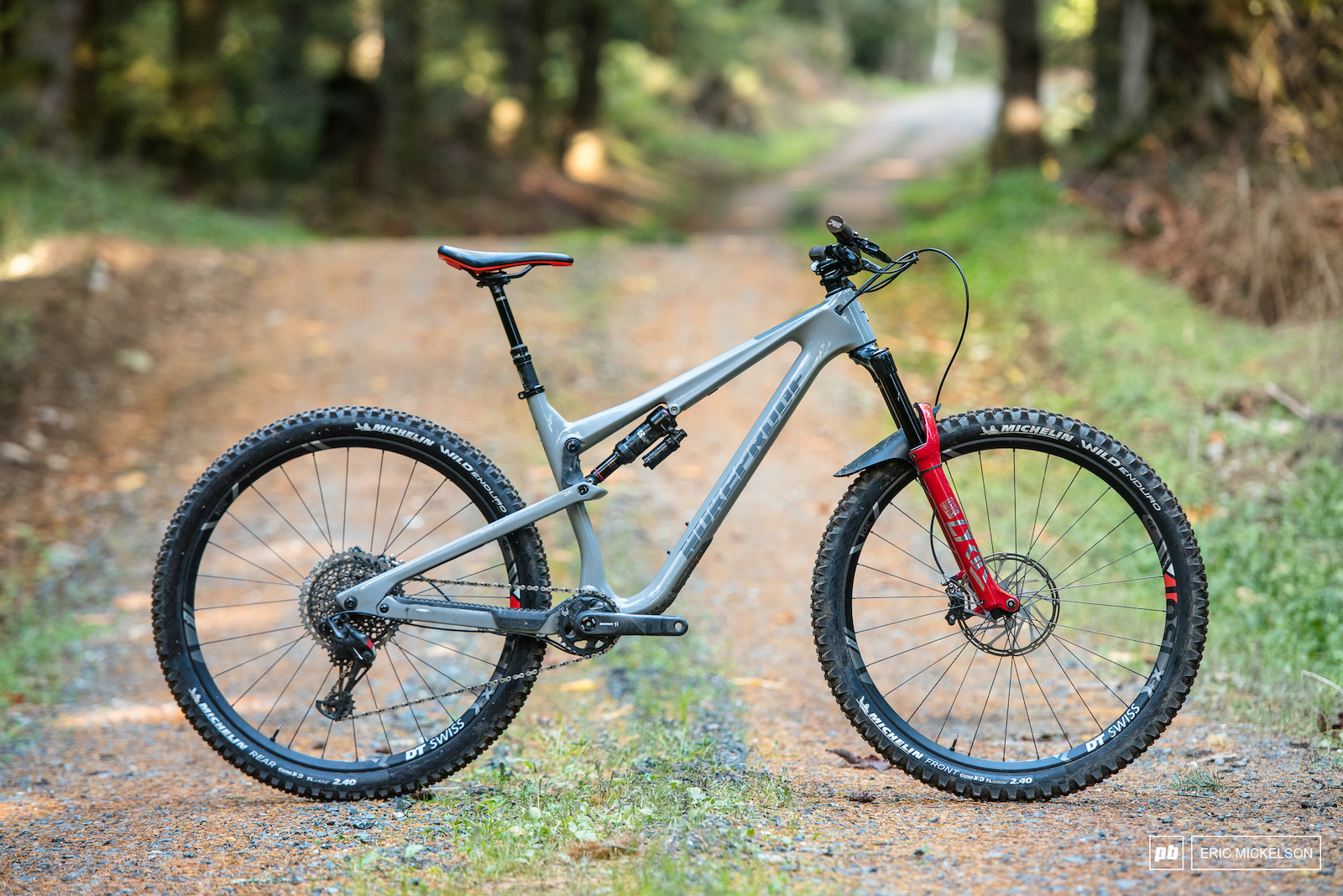
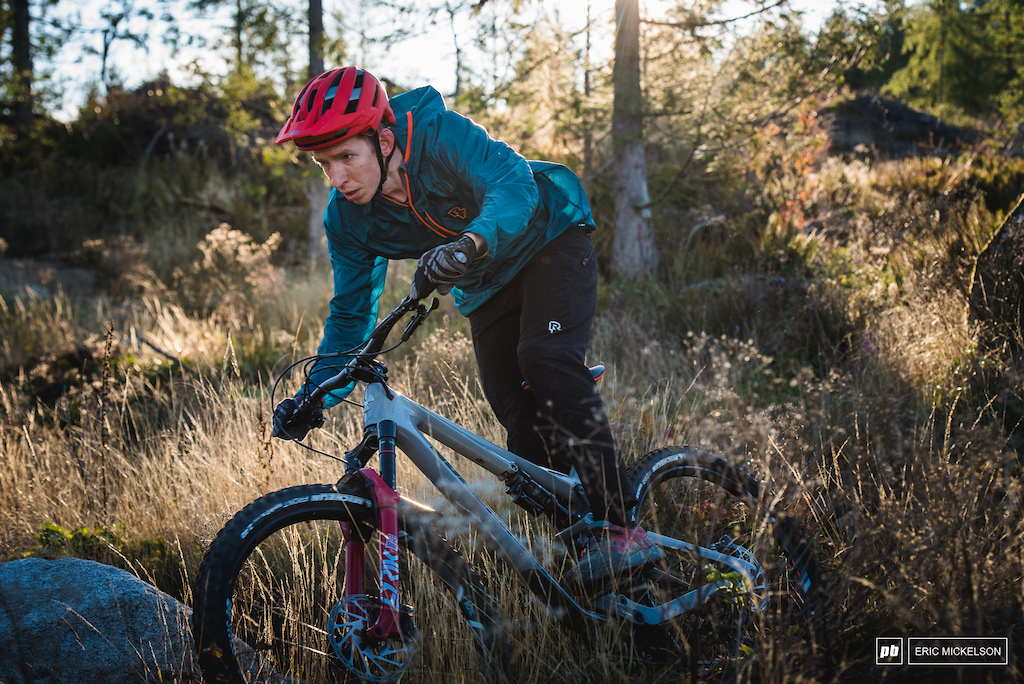
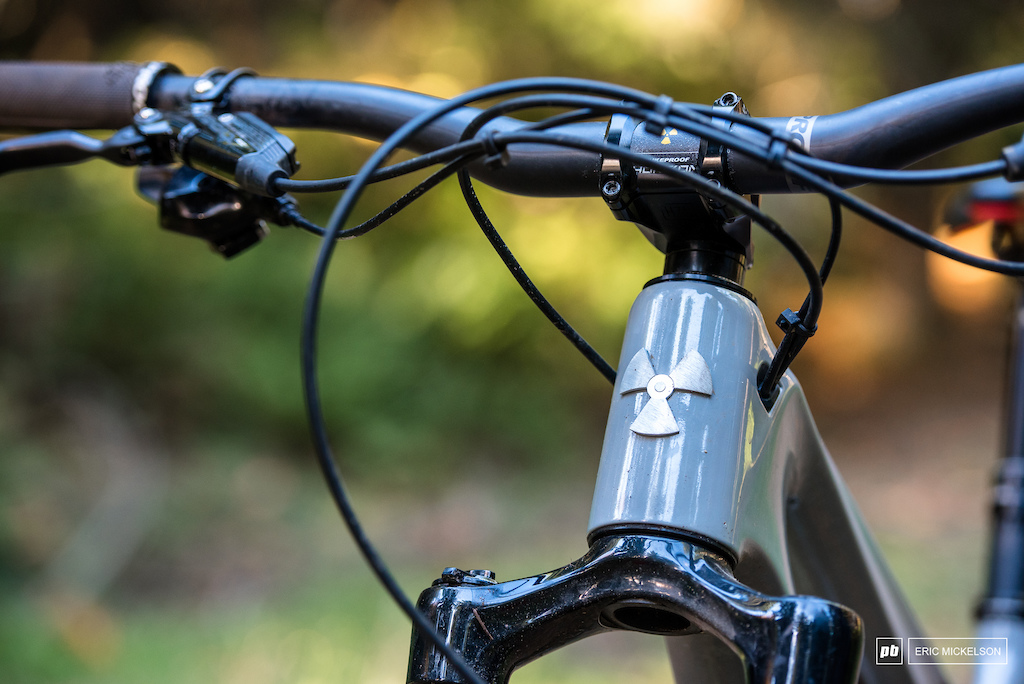

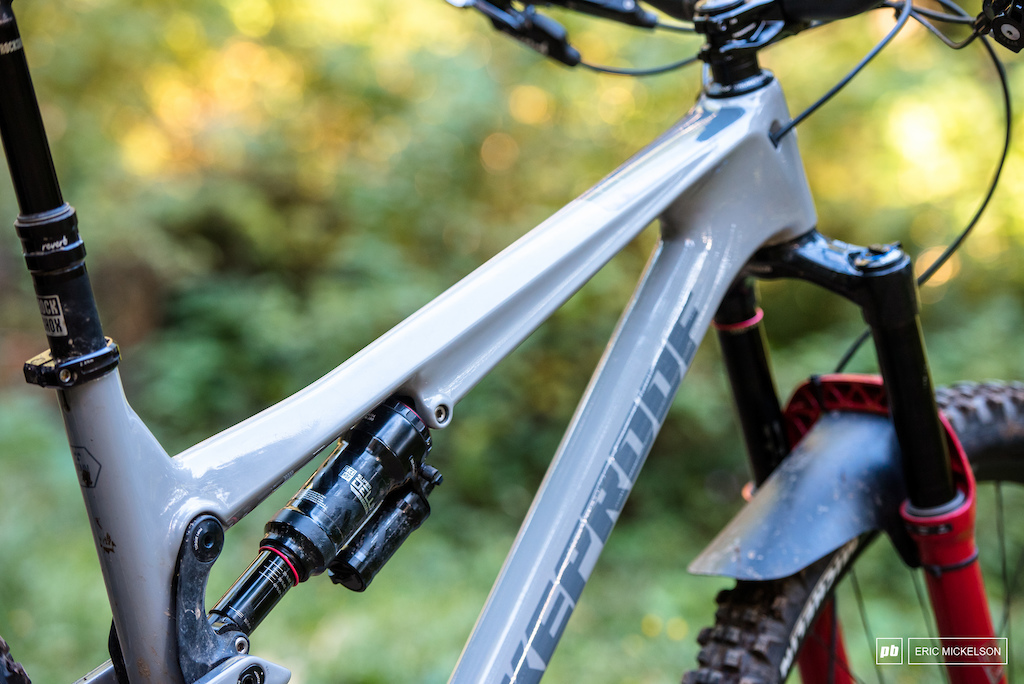
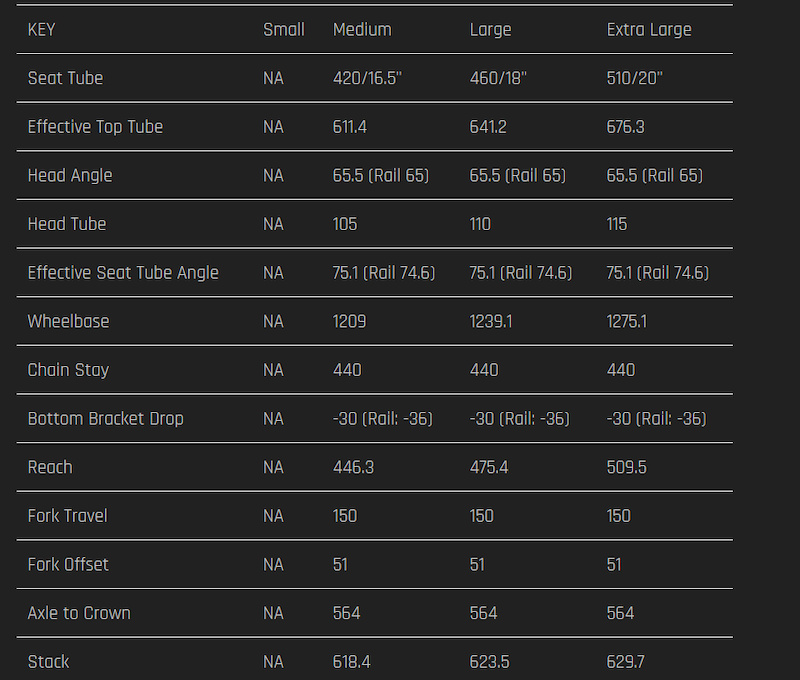
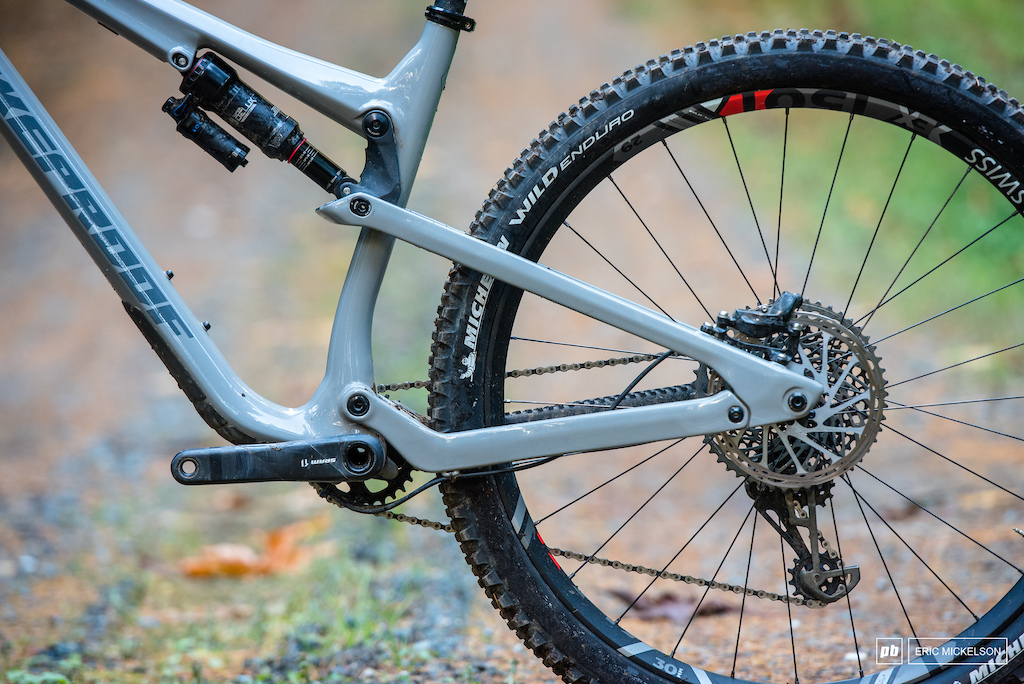





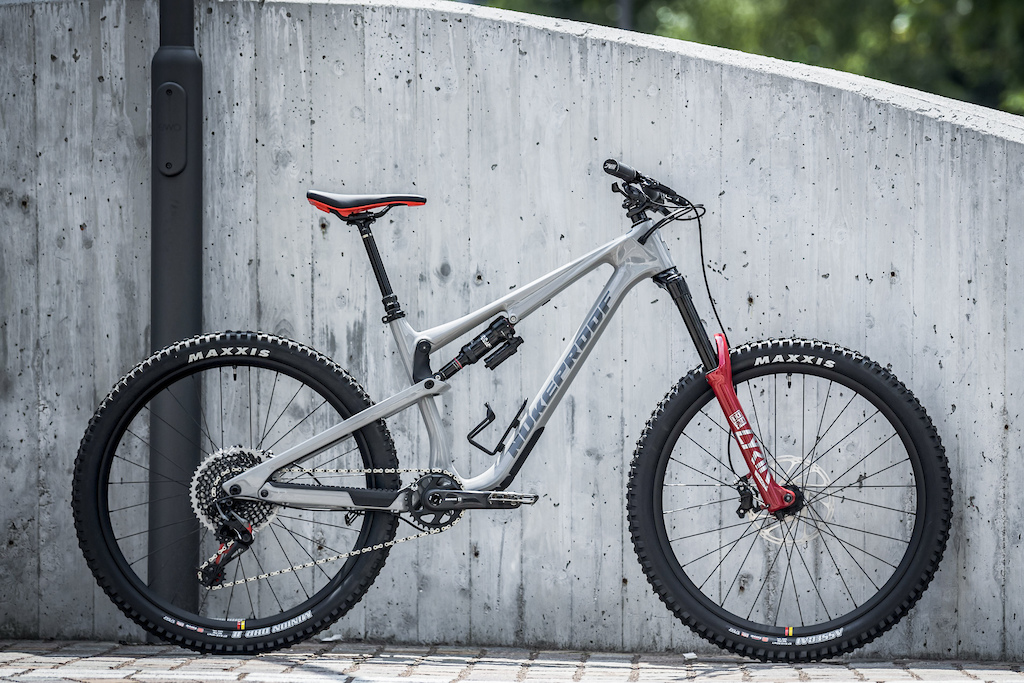

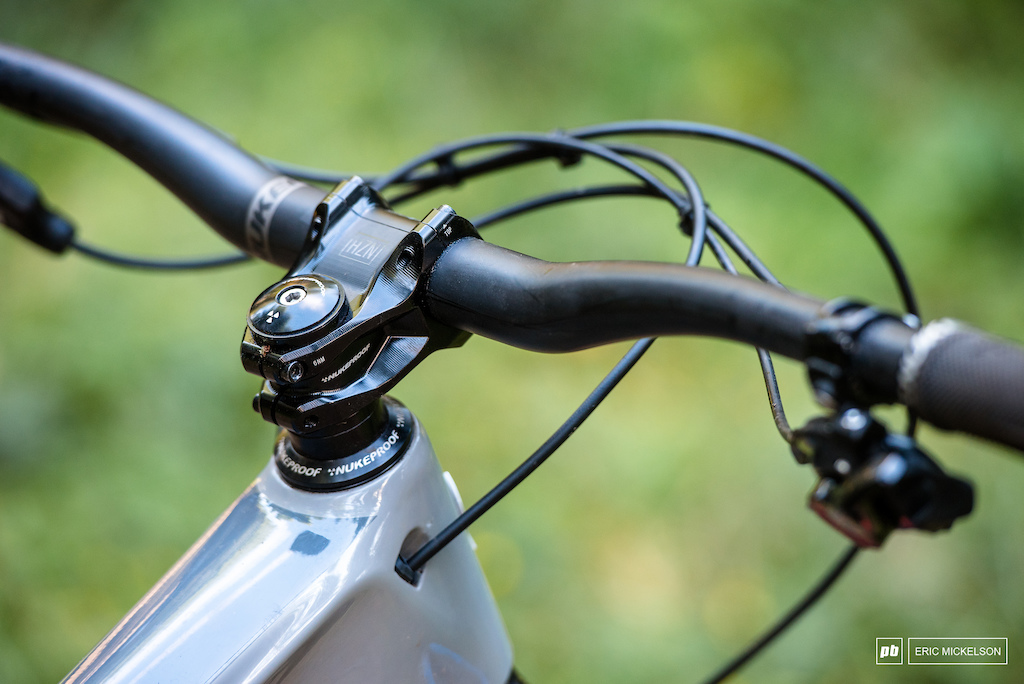

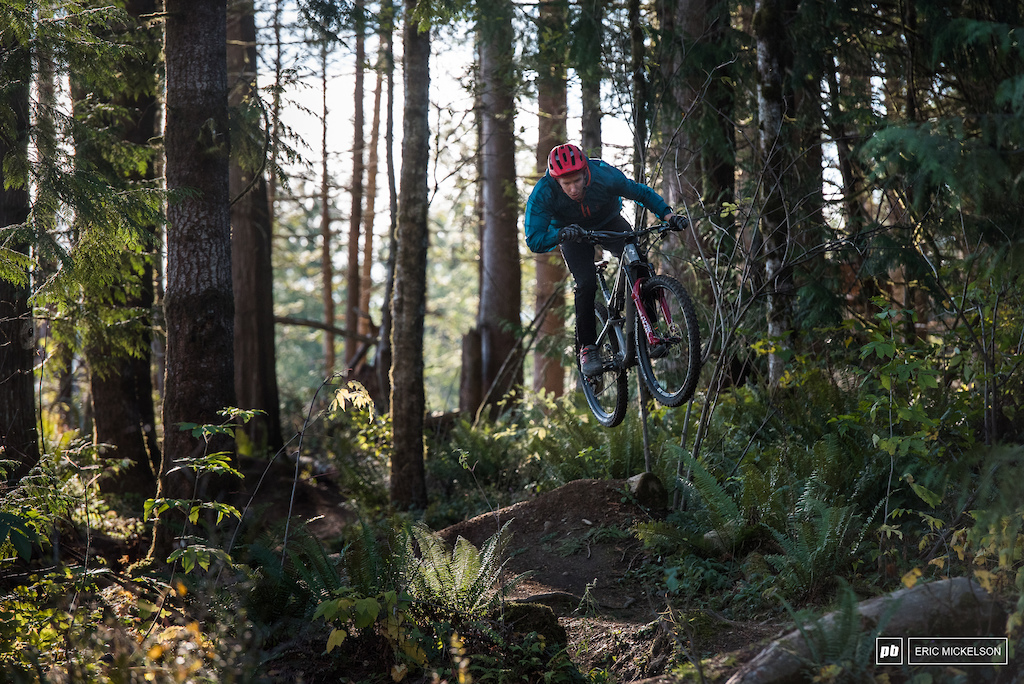

This bike is NOT nukeproof and will NOT survive a nuclear weapon attack. How can they get away with such a lie?
The only time the Assegai seemed to do better for me was at bike parks, riding hardpacked trails where the square knobs of the Vigilante didn't stand up as well.
Trail bikes are supposed to retain a lot of the efficiency of XC bikes whilst being much more capable all-rounders. The fact that so many "trail bikes" are now coming with DHF/DHR combos is over the top. At least some brands are going with something lighter on the rear like an Aggressor or similar.
It does strike me that there doesn't seem to be much in Maxxis' front tyre line up between XC and DHF though. I think the Schwalbe HD2 is an awesome trail tyre that can handle some aggressive TRAIL riding whilst still retaining a lot of efficiency, without having to go all out on a Magic Mary.
Trail bikes are great. Everything need not be "enduro".
To me, steeper ST angles make more sense on my enduro bike that is meant to spend more time descending or with the dropper slammed before climbing back up.
I want my trail bike to be fast and fun all day, and on rolling terrain that requires more pedaling with the post in the up position.
74.5 - 75.5 seems perfect for trail riding, as opposed to my 76.8 degree enduro bike.
Like I said I am fine with my 77 ST on my enduro bike, as I am not usually riding XC or trail riding on that bike.
@vinay: What size is your dropper? I would imagine that slamming your seat down with a long travel dropper would negate this?
That is the biggest thing that I have noticed in the current crop of steep STA 130-150mm bikes I have been demoing. If they are spec'd with a 150mm dropper, the seat does get in the way more than my current bike, but when I have demo'd bikes with 200mm+ drop, I have found this isn't an issue in the slightest.
I think ultimately, the industry probably needs to move away from the one size fits all approach. (Though I do think we are starting to see more of that now)
I'm only 5'11" and I had my LBS switch to Bike Yoke 185 dropper right away as well.
This is like doing leg presses at the gym, putting your feet higher up (more hamstrings and glutes ) vs having them low (more quads). Hamstrings and glutes are more powerful muscle groups and with your feet higher can generate more power.
I think the industry will come back around. Everyone is too caught up on what these paid pro reviewers are telling us we need.
That's a comment I hear a lot about this kind of bike. Then you look at the build and indeed they are enduro bikes, from tyres (well, almost) to fork.
That's just me, but I'd build it a little bit lighter or simply go for... an enduro bike.
I bet if you (could) overshock this to 155mm travel, it would ride just like an enduro bike.
Hell, it's often touted as a good thing when comparing 27 to 29 inch wheels, the way the big ones carry momentum and help with "flow"?
The low setting seems like the most likely choice for people who want one bike to do it all, but the high setting (and the shorter fork) might be of interest to those who are looking at this as a complement to a longer travel bike.
Thanks for the review! This is one of the bikes I'm very interested in, but given the sales model won't be able to demo.
31.1lbs seems quite porky for a carbon bike though; in fact it's virtually the same published weight as my overbuilt aluminium monster! Where did all the weight savings go, the cassette and wheels?
Frame weight of a 27.5 Large frame with shock, axle and headset cups is 7.9lb, if that helps.
And yes, I meant it slightly tongue in cheek as I think providing the leverage, AS, AR, etc curves are extremely useful for each of us to make our own conclusions and would really add to the content provided...
I really do enjoy both your and Levy's prose. I think you guys do a great job. It's hard not to be hyperbolic, bikes are so good these days. You have to go to the extreme to discriminate between them at times.
Then has the audacity to make judgements which would have been affected by the flip chip setting:
"Fit-related details aside, the Reactor is what I'd call a 'reliable' climber. It's not a ultralight sprinter, and it's handling is more relaxed than rabid". Maybe in the "Trail" setting the bike climbs much better? Until you've tried, you're not really in a position to properly comment.
"The Reactor gets docked a couple of points for not having a steep enough seat angle, a fact that's exacerbated slightly by the 150mm fork on the RS version." Maybe the half degree change on the flip chip would have been enough for you not to have to move the saddle or change the stem? Again, you'll never know.
Why on earth wouldn't you try the "trail" setting on a trail bike, especially when you say it felt like an enduro bike in "rail"? The whole review loses credibility because of it.
"I'm of the opinion that on bikes with slacker head angles a 7 millimeter difference in offset doesn't make a dramatic difference in handling", says Kazimer in 2019, on a bike with a 65.5 (less slack!) head angle and the same reach.
Which is it?
Note: 2017 review is here: www.pinkbike.com/news/transition-sentinel-review-2017.html
And or course you find the part I left out to make my query seem better, haha.
Still don't like the idea of being able to adapt riding styles to the differences as being proof that the difference is negligible. If you have to adapt to each offset, then each offset does in fact actually work better with a given style.
geometrygeeks.bike/bike/nukeproof-reactor-290c-factory-2020
geometrygeeks.bike/bike/nukeproof-reactor-275c-factory-2020
Personally I would much rather read a review based on how the bike is shipped stock. Leave the complaints for the comparison to other bike(s) or the conclusion.
Do you have any specific criteria for choosing to ride flats or clips?
I tend to clip in for longer trail rides, and I'll usually run flats for bike park / DH riding. I'm comfortable with either setup, though, and a lot of it just depends on what needs to be reviewed.
Thanks
Although in that case, why aren't you on a similar travel 27er with some volume reducers in the shock and/or decent progression in the kinematics?
This thing is 74.6 in the slack setting (the only setting I'd run it in). Way too slack... it's slacker than the seat tube on the Mega FFS!
I am one of these guys but I bought a bike with 75.5 STA anyways and just slam seat forward, really isn't that bad. I won't go any slacker though.
Anyway, waight on your wrists is caused by too much ETT, not seat tube angle. Simply throw away your XC bar and stem, rise your cockpit and voila. Btw, bikes with steeper SA have shorter ETT, thus less pressure on your wrists.
And this goes with the bullshit arguments about normal fork offsets (which is just one number) hurting resale value. Screw worrying about resale and ride your (well fitting because you considered at all the numbers, or even test rode it) f*cking bike!